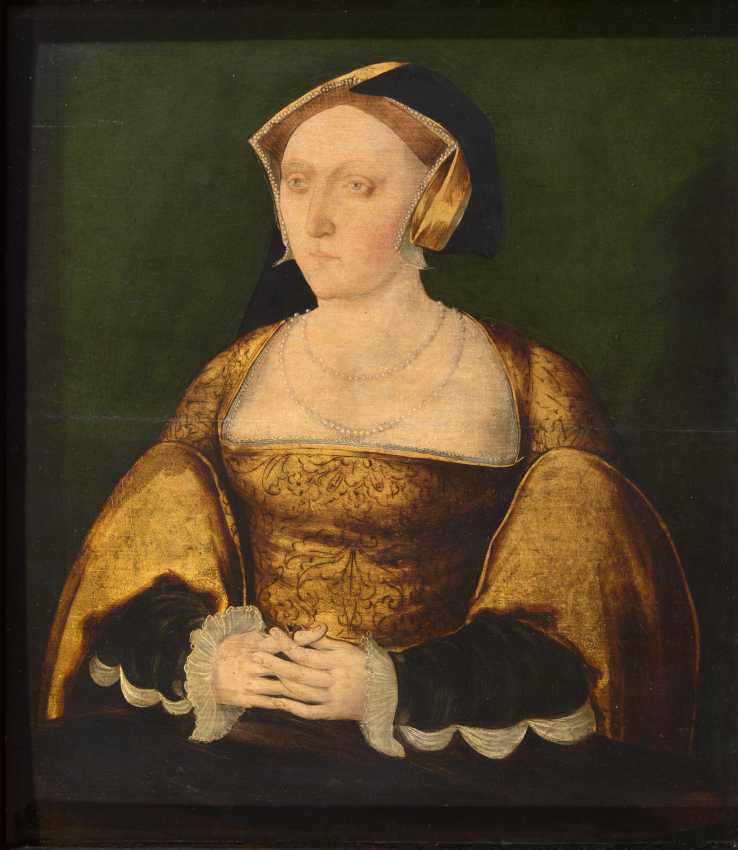A hitherto overlooked statement in the Calendar of State Papers, Spain offers intriguing information about Henry VIII's relationship with his third wife, Jane Seymour. Sometime in late 1535 or early in 1536, the king began a liaison with Jane - initially courtly in nature - and married her in May 1536, only eleven days after the execution of his second wife Anne Boleyn. Born in about 1509, Jane had served Anne but there is little evidence concerning her relationship with the king and the circumstances in which it began. It was only in February 1536, for example, that the imperial ambassador Eustace Chapuys reported the king's 'treatment shown to a lady of the Court, named Mistress Semel [sic], to whom, as many say, he has lately made great presents'.
Thus, in view of the obscure origins of the relationship, the following report deserves attention. On 26 June 1536 from Rome, a month after the execution of Anne Boleyn and Henry VIII's marriage to Jane, Dr Ortiz informed Commander Molina that the king had married again, to 'a lady who was already in the family-way by him five or six months ago'. The 'family way' was a term used to describe pregnancy. For example, Chapuys reported in January 1534 that Anne Boleyn 'is now in the family way again, and in a state of health and of an age to have many more children'. Thus, if Ortiz is to be believed, Jane had conceived a child in December 1535/January 1536, several months before her royal marriage.
The suggestion in this report that Jane was the king's mistress in the physical - rather than courtly - sense is interesting in view of her posthumous reputation as a virtuous and chaste figure, allegedly the antithesis of her predecessor, the flirtatious Anne Boleyn. However, other ambassadorial dispatches written shortly before Jane's marriage were similarly ambivalent about her virtues, indicating that Jane's moral, upstanding reputation was not necessarily as widely shared as is generally assumed. On 18 May, the day before Anne's execution, Chapuys wrote to Antoine Perrenot with information about the king's new love, commenting that Jane was of medium height, fair, and 'no great beauty'. He confided his doubts as to whether, having long resided at court, Jane really was a virgin. The ambassador cynically remarked that 'he [Henry] may make a condition in the marriage that she [Jane] be a virgin, and when he has a mind to divorce her he will find enough witnesses'. However, once Jane had become queen and had demonstrated her desire to restore the king's eldest daughter, Mary (daughter of Katherine of Aragon) to Henry's good graces, the ambassador's attitude towards Jane became markedly more positive and complimentary.
It is highly likely, however, that Ortiz was mistaken. There is no evidence that Jane was pregnant as early as December 1535, and such a detail would surely not have escaped the attention of the perceptive, eagle-eyed Chapuys, who keenly watched for any sign that Henry's relationship with Anne was in danger. Ortiz's dispatches, moreover, contain many inaccuracies, based as they are on second- or thirdhand gossip and rumours about the English court; his account of the fall of Anne Boleyn testifies to his limited knowledge of actual events. This is perhaps unsurprising, writing as he was from Rome and thus not in physical proximity to the events he describes. As I have noted elsewhere, ambassadors serving in the royal courts were keenly interested in any sign of a queen's pregnancy. The references to the possible pregnancies of Anne Boleyn and Jane Seymour in this blog post, reported by ambassadors, testifies to the envoys' interest in the subject. Similarly, when Henry VIII married for the fifth time in 1540, it was reported in September in Brussels by the Venetian ambassador Francesco Contarini that 'the new Queen Katharine [Howard] is said for certain to be pregnant', a report that echoed the claim of the French ambassador Charles de Marillac in July that Katherine 'is already enceinte'.
Of course, Jane may have been Henry's mistress in the physical sense prior to their wedding in May 1536 and she may have conceived a child, but there is no other evidence to support Ortiz's claim and others, including Chapuys, surely would have reported a pregnancy if it was indeed the case. Chapuys only learned of their relationship in February 1536 and his dispatches suggest that the relationship between Henry and Jane was, at least initially, a courtly one, in which the king sent gifts and letters to his beloved but without the expectation of physical favours. By the spring, however, Henry was determined to set aside Anne and take Jane as his third wife. It is nonetheless interesting that several novelists have explored the idea that Jane conceived a child either before, or during the early months of, her marriage, but which resulted in a miscarriage or stillbirth. Whether or not that was the case, it is indisputable that she gave birth to the future Edward VI on 12 October 1537 at Hampton Court Palace, but the queen tragically died just days later, on 24 October, the only one of Henry's six wives to provide him with a surviving male heir.

No comments:
Post a Comment